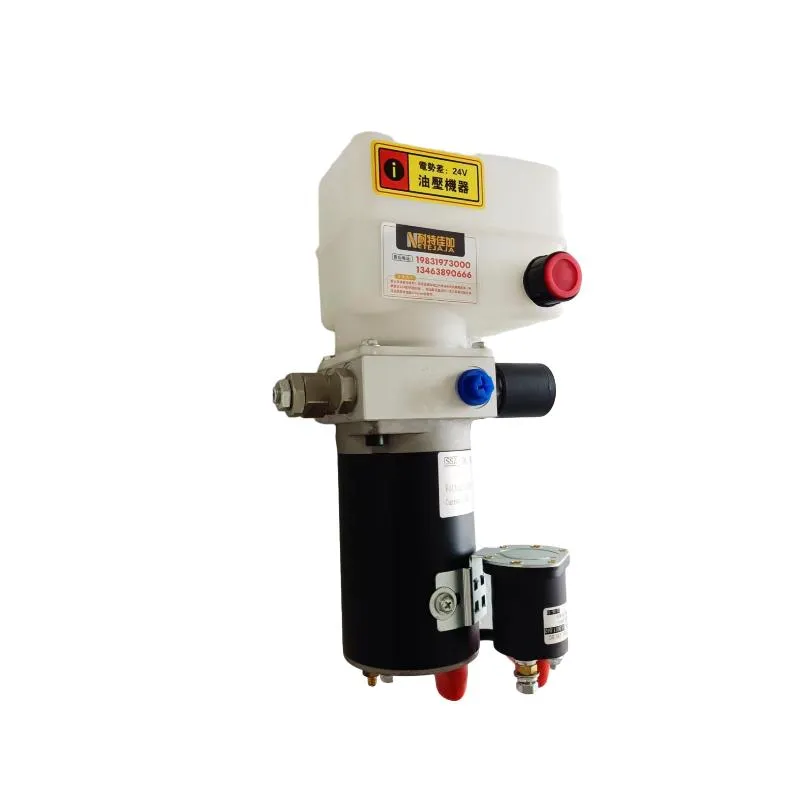דצמ . 12, 2024 10:06 Back to list
filling hydraulic cylinder products
Filling Hydraulic Cylinder Products A Comprehensive Overview
Hydraulic cylinders are essential components in various industrial applications, providing the necessary force to perform heavy-duty tasks. These cylinders operate based on Pascal's principle, where pressure applied to a fluid in a confined space results in an equal increase in pressure throughout the fluid. To maintain optimal performance and ensure the longevity of hydraulic systems, the filling and maintenance of hydraulic cylinders is a critical process. This article delves into the importance of properly filling hydraulic cylinder products, the challenges faced, and best practices to follow.
Understanding Hydraulic Cylinder Filling
The filling of hydraulic cylinders is a procedure that involves introducing hydraulic fluid into the cylinder to ensure that it can operate effectively. This hydraulic fluid, typically oil, serves multiple functions it transmits power, lubricates components, and helps in dissipating heat. The filling process is not merely about adding fluid; it encompasses ensuring that the hydraulic system is free from air and contaminants, which can significantly affect performance.
Importance of Proper Filling
1. Performance Efficiency Properly filled hydraulic cylinders function more efficiently. If a cylinder is underfilled, it may not generate enough pressure to perform its task effectively. Conversely, overfilling can lead to increased pressure levels, causing seals to wear prematurely or, in severe cases, leading to system failure.
2. Preventing Air Entrapment Air trapped within the hydraulic system can lead to numerous issues, including cavitation, reduced efficiency, and erratic operation. By ensuring the cylinder is filled correctly, operators can prevent air from becoming trapped in the system, maximizing performance and reliability.
3. Minimizing Contamination During the filling process, it's crucial to prevent contaminants from entering the hydraulic system. Contaminated fluid can lead to wear and tear, ultimately shortening the lifespan of the hydraulic cylinder and associated components.
4. Enhancing Safety Proper filling and maintenance procedures enhance the safety of hydraulic systems. Fluid leaks or system failures can pose significant risks in industrial settings, making it essential to ensure that hydraulic cylinders are filled according to specifications.
Challenges in Hydraulic Cylinder Filling
Filling hydraulic cylinders may seem straightforward, but several challenges can complicate the process
.- Environmental Conditions Extreme temperatures can affect the viscosity of hydraulic fluids, making it crucial to select the right fluid type for specific applications. Cold conditions may lead to thickening, while high temperatures can thin the fluid, altering its performance characteristics.
filling hydraulic cylinder products

- Fluid Selection Choosing the appropriate hydraulic fluid is vital. Different applications require specific types of hydraulic oils or fluids, each with unique properties. A mismatch can lead to performance issues and potential damage.
- Equipment Compatibility Not all hydraulic cylinders are created equal. Variances in design and specifications may require tailored filling techniques. Operators must familiarize themselves with the specific requirements of the hydraulic cylinders in use.
Best Practices for Filling Hydraulic Cylinders
To ensure the hydraulic cylinders function optimally, follow these best practices during the filling process
1. Prepare the Equipment Before filling, check hoses, connectors, and the hydraulic cylinder itself for any signs of wear or damage.
2. Use Clean Equipment and Fluid Ensure all filling equipment is clean and dry. Use high-quality hydraulic fluids that meet the manufacturer’s specifications for the hydraulic cylinders being filled.
3. Filling Procedure Fill the cylinder slowly to allow trapped air to escape. This process can be aided by operating the cylinder during the filling to ensure air is expelled and fluid fills the necessary spaces.
4. Monitor Levels Carefully Avoid overfilling by carefully monitoring the level of hydraulic fluid during the process. Most hydraulic cylinders have fill marks that serve as guides.
5. Regular Maintenance Establish a routine maintenance schedule to check fluid levels, inspect components, and take corrective actions when necessary to prevent issues before they occur.
Conclusion
Filling hydraulic cylinder products is a crucial process that demands attention to detail and adherence to best practices. By ensuring proper filling techniques and maintaining systems through regular checks, industries can enhance the efficiency, safety, and longevity of their hydraulic operations. As technology advances, ongoing education and improvement in filling techniques will continue to play a significant role in hydraulic system management.
-
High-Quality Set of 50/60-45-290 471 - Precision Parts
NewsAug.19,2025
-
1.5 Ton Lifting Cylinder-Hebei Shenghan|Heavy-Duty Lifting, Precision Engineering
NewsAug.18,2025
-
1.5 Ton Lifting Cylinder-Hebei Shenghan|Precision Hydraulic Solutions&Industrial Lifting
NewsAug.18,2025
-
1.5 Ton Lifting Cylinder 70/82-40-290-535 - Hebei Shenghan Hydraulic Machinery Co., Ltd.
NewsAug.18,2025
-
1.5 Ton Lifting Cylinder 70/82-40-290-535|Hebei Shenghan Hydraulic Machinery Co., Ltd.
NewsAug.18,2025
-
1.5 Ton Flipping Oil Cylinder 70/82-40-217-720: High Performance
NewsAug.18,2025
